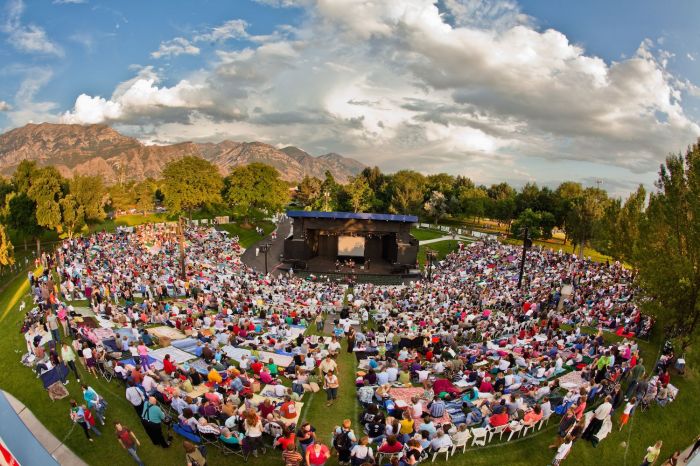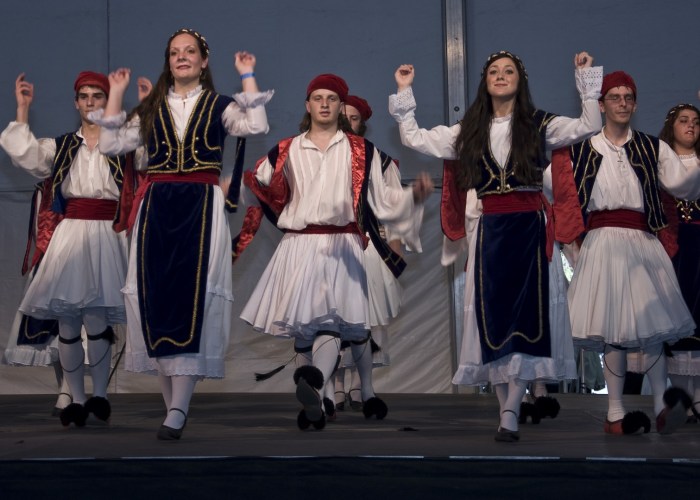Salt Lake City Festivals are more than just events; they’re a vibrant tapestry woven from music, art, culture, and community. From large-scale spectacles drawing thousands to intimate gatherings celebrating local traditions, these festivals inject life into the city, offering a diverse range of experiences for residents and visitors alike. This exploration delves into the heart of Salt Lake City’s festival scene, uncovering the economic impact, community engagement, and the unique character of each celebration.
We’ll examine everything from the logistical challenges of hosting massive events to the future trends shaping this dynamic landscape.
This comprehensive guide unveils the magic behind Salt Lake City’s festivals, highlighting their historical significance, economic contributions, and the crucial role they play in fostering a strong sense of community. We’ll profile some of the most popular annual events, analyzing their unique characteristics and the strategies employed to engage diverse audiences. Prepare to be captivated by the energy and diversity of Salt Lake City’s vibrant festival scene.
Festival Venues and Infrastructure: Salt Lake City Festivals

Salt Lake City’s vibrant festival scene relies heavily on the availability and suitability of its venues. The choice of location significantly impacts the success of an event, affecting everything from attendee experience to logistical challenges. Understanding the infrastructure requirements and comparing various venues is crucial for event organizers seeking to maximize impact and minimize potential problems.
Common Festival Venues in Salt Lake City
Salt Lake City offers a diverse range of spaces suitable for festivals, each with its own strengths and weaknesses. Popular choices include large parks like Liberty Park and Sugarhouse Park, which provide ample green space and often include existing infrastructure like restrooms and parking. The Gallivan Center, a downtown plaza, offers a more urban setting with built-in stage areas and convenient access to public transportation.
Larger events might utilize the Utah State Fairpark, which possesses extensive facilities including exhibition halls and ample parking, although it’s further from the city center. Finally, many smaller festivals leverage unique venues like breweries, art galleries, and even parking lots, depending on the scale and nature of the event. The selection depends heavily on the size, type, and budget of the festival.
Infrastructure Requirements for Large-Scale Events, Salt Lake City Festivals
Hosting a large-scale festival requires meticulous planning and robust infrastructure. Transportation is paramount; adequate public transport access, designated parking areas, and potentially shuttle services are essential to manage attendee flow and minimize traffic congestion. Security is another critical element, encompassing crowd control measures, security personnel, and potentially even police presence, depending on the event size and anticipated attendance.
Sanitation is equally vital, demanding sufficient restroom facilities, trash receptacles, and efficient waste management systems to maintain a clean and hygienic environment for attendees. Furthermore, effective communication systems, including clear signage, announcements, and emergency protocols, are crucial for a smooth and safe event. Power supply, appropriate lighting, and potentially temporary structures like stages and vendor booths also need to be factored into the planning.
For instance, the Utah State Fairpark’s existing infrastructure significantly simplifies these logistical challenges for large events.
Comparison of Festival Venues
| Venue | Advantages | Disadvantages |
|---|---|---|
| Liberty Park | Large green space, existing restrooms, ample parking (potentially), scenic backdrop | Limited built-in infrastructure, potential for weather disruptions, distance from downtown |
| Gallivan Center | Downtown location, built-in stage, convenient public transport access | Smaller capacity than parks or Fairpark, limited parking, potential noise restrictions |
| Utah State Fairpark | Extensive facilities, ample parking, large capacity | Distance from downtown, requires significant logistical planning, potential higher rental costs |
| Smaller Venues (Breweries, Galleries etc.) | Unique atmosphere, potentially lower rental costs, intimate setting | Very limited capacity, often lack of built-in infrastructure, potentially limited parking |
Community Engagement and Participation in Festivals

Salt Lake City’s vibrant festival scene thrives not just on spectacular events but on the active participation of its community. The energy, enthusiasm, and sheer manpower contributed by residents are crucial ingredients in the recipe for successful festivals, transforming them from simple events into deeply enriching community experiences. This engagement isn’t merely about attendance; it’s about fostering a sense of shared ownership and pride.The success of Salt Lake City’s festivals hinges significantly on the dedication of its volunteers.
These individuals donate their time and skills, ensuring smooth operations, enhancing visitor experiences, and contributing significantly to the overall positive impact of each event. From setting up and dismantling event infrastructure to providing information and assistance to attendees, volunteers are the unsung heroes behind many of the city’s most memorable festivals. Their contributions are invaluable, allowing organizers to focus on larger logistical aspects and creative elements while maintaining a high level of service.
Consider the impact of a large-scale event like the Utah State Fair – the smooth flow of crowds, the readily available information booths, and the efficient handling of any issues are largely due to the coordinated efforts of hundreds of volunteers.
The Role of Volunteers in Festival Success
Volunteers are the backbone of many Salt Lake City festivals. Their contributions extend beyond basic tasks; they are often the first point of contact for attendees, shaping their initial impressions and overall experience. For instance, during the annual Twilight Concert Series, volunteers are instrumental in managing crowd flow, distributing information about performers and schedules, and ensuring a safe and enjoyable environment for all.
This direct interaction fosters a sense of connection between attendees and the festival itself, making it a more personal and memorable experience. The economic benefits of volunteerism are also substantial; by reducing labor costs, festivals can allocate more resources towards other aspects of event production, ultimately enhancing the overall quality and impact of the festival.
Festivals as Catalysts for Community Building
Salt Lake City festivals serve as powerful catalysts for community building and social cohesion. They provide opportunities for people from diverse backgrounds and interests to connect, fostering a sense of shared identity and belonging. Events like the city’s numerous ethnic festivals, for example, celebrate cultural diversity and promote understanding between different communities. These festivals are not merely celebrations of heritage; they are opportunities for intercultural dialogue, exchange, and mutual respect.
Furthermore, festivals often generate a positive economic impact on local businesses, boosting local economies and further strengthening the sense of community pride and shared prosperity. The collective experience of enjoying a successful festival strengthens social bonds and promotes a sense of civic pride.
Community Initiatives and Programs Related to Festivals
Many festivals incorporate community initiatives and programs designed to further engage residents and enhance their impact. For example, some festivals feature local artisans and craftspeople, providing a platform to showcase their work and contribute to the economic vitality of the community. Others include educational components, offering workshops or demonstrations related to the festival’s theme, thereby enriching the experience for attendees and promoting learning and cultural exchange.
Furthermore, several festivals actively partner with local non-profit organizations, using their platform to raise awareness and support for important causes. This collaborative approach amplifies the festival’s impact, transforming it into a vehicle for both entertainment and positive social change. The inclusion of local food vendors not only provides delicious options but also supports local businesses and contributes to the festival’s overall economic benefit for the city.
Salt Lake City’s festivals are a testament to the city’s dynamic spirit and its commitment to fostering community and celebrating cultural diversity. From the economic benefits they bring to the city to the unforgettable experiences they offer residents and tourists, these events are integral to the fabric of Salt Lake City. By understanding the challenges and opportunities inherent in festival organization, we can ensure these vibrant celebrations continue to thrive for years to come, enriching the lives of all who participate.